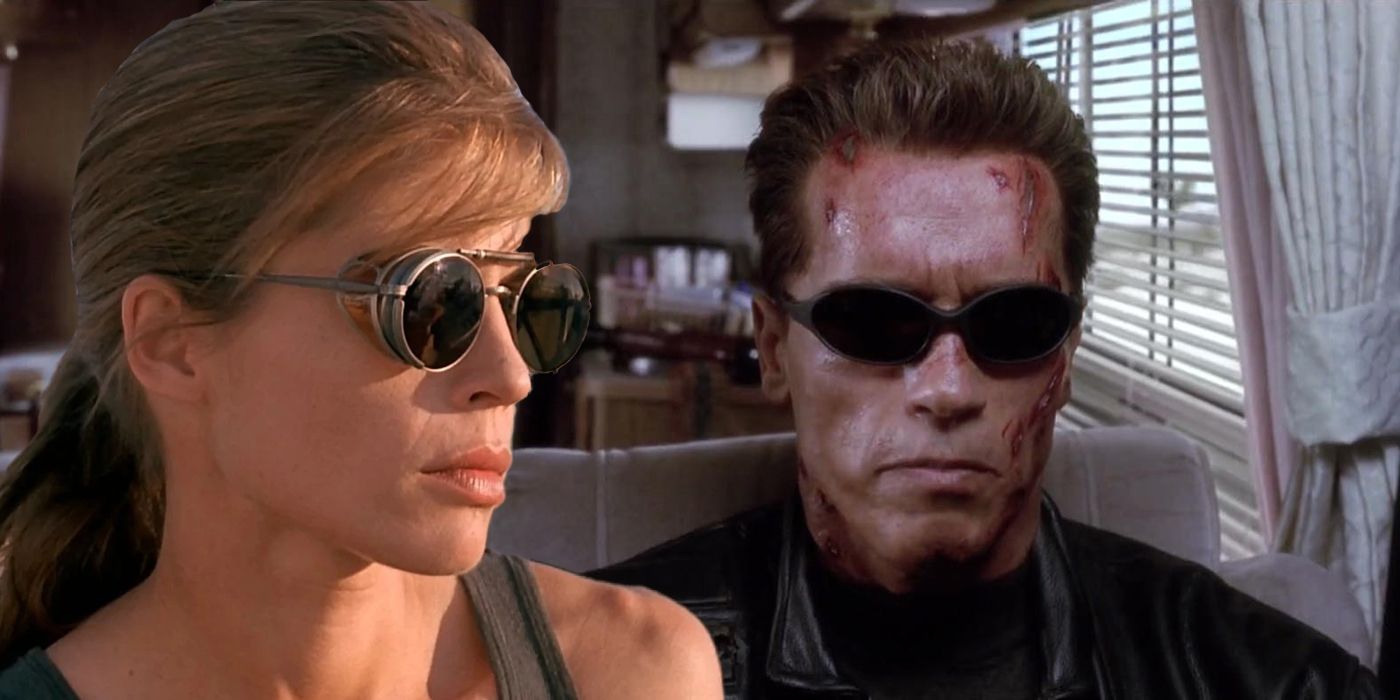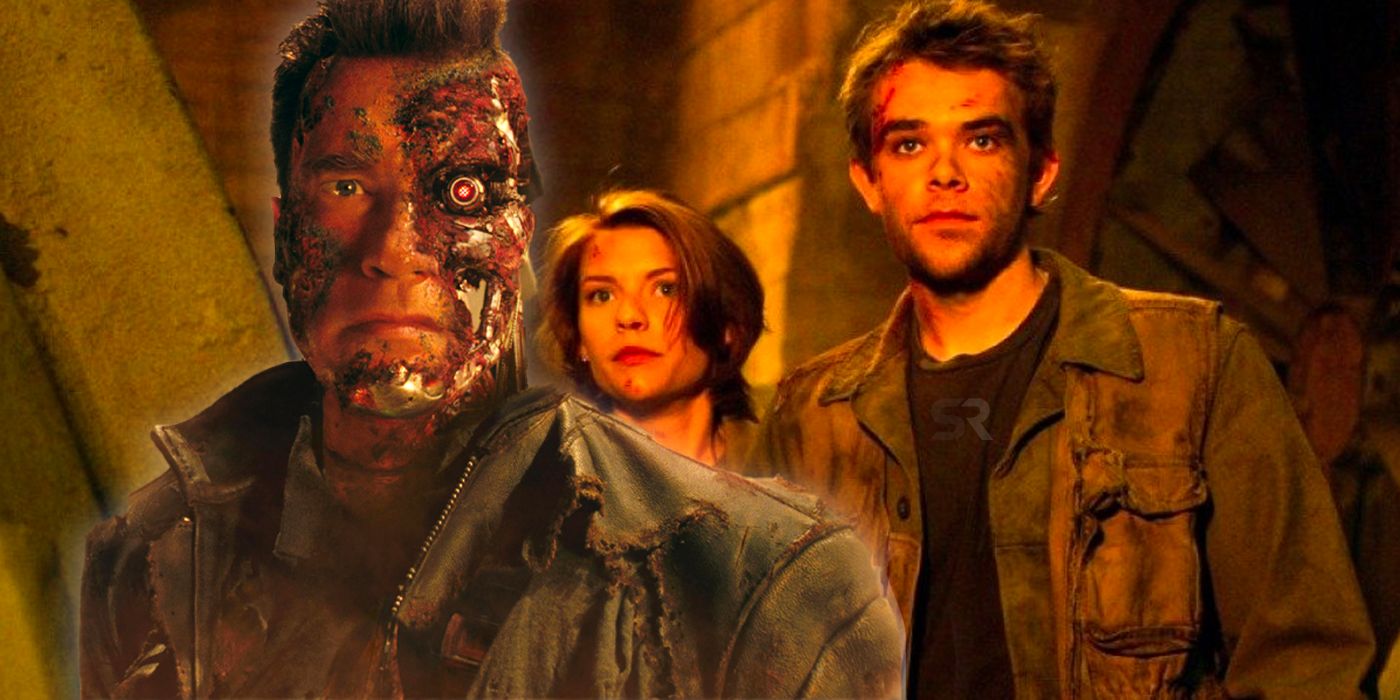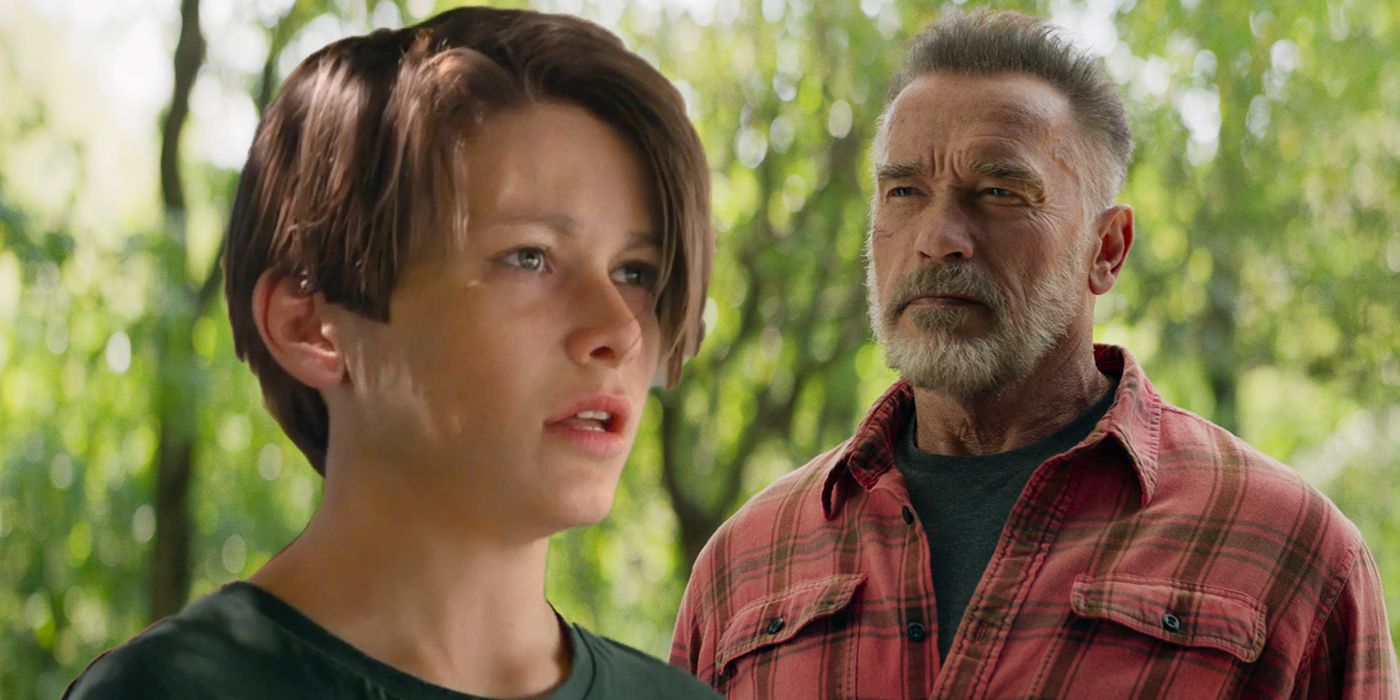
The decision to kill off franchise heroine Sarah Connor during Terminator 3: Rise of the Machines could have saved the sequel—and the choice to cut the scene may have helped doom the Terminator franchise later on. For some time now, the Terminator movies have struggled to find a figure to center the fast-paced action of the series around. In the first two movies, director James Cameron’s sci-fi horror franchise was clearly focused on heroine Sarah Connor, with her love interest Kyle Reese providing support in the original Terminator while her bratty teen son/Reese's offspring John Connor fulfilled the supporting role in Terminator 2: Judgment Day.
However, when Sarah Connor was abruptly killed off offscreen between the end of Terminator 2: Judgment Day and the beginning of 2003’s Terminator 3: Rise of the Machines, the series was left without an emotional anchor. Although John could have theoretically fulfilled this role, his diminished role in Terminator: Salvation, a minor role in Terminator: Genisys, and death in Terminator: Dark Fate ensured this never happened. Meanwhile, Sarah Connor’s return in Terminator: Genisys (and Linda Hamilton's return in Terminator: Dark Fate) made it clear that the series wanted to keep her around, but proved too little too late for many Terminator franchise fans.
The death of Sarah Connor was cut from Terminator 3: Rise of the Machines, but the moment could have saved the light-hearted sequel from itself. The biggest issue with Terminator 3: Rise of the Machines was that, for a movie centered around the end of the world, its tone was too light for the franchise. Once the now-grown-up John Connor was introduced alongside Arnie’s returning T-800, it was clear that neither of the main characters could be killed off without fans being disappointed. However, at the same time, fans of the often-brutal franchise would be disappointed if the sequel failed to live up to the twisty shocks of The Terminator and Terminator 2: Judgment Day, which is why Sarah’s proposed Terminator 3: Rise of the Machines death could have saved the series and her character.

Returning Terminator series star Linda Hamilton did not want a part in the sequel once she learned she would be killed off midway through, prompting her to leave the franchise until the 2019 flop Terminator: Dark Fate. With Hamilton gone, the creators opted to kill off her character between movies and referenced her peaceful death in Terminator 3: Rise of the Machines, disappointing many fans who hoped to see her back in action. Sarah Connor does contribute a vital moment to the movie (and one that is often cited as one of the sequel’s best sequences) when a massive arsenal of weaponry is unearthed from her crypt. However, Terminator 3: Rise of the Machines is still sorely lacking the presence of the Terminator franchise’s erstwhile star and fails to recapture the dynamic tone of Terminator 2: Judgment Day precisely because John Connor’s famous mother is nowhere to be seen onscreen.

Without Sarah’s onscreen death (which would have occurred midway through the sequel, shocking audiences who assumed she was the heroine), Terminator 3: Rise of the Machines was a light-hearted romp whose goofy tone never sat right with many viewers. There were no stakes to the sequel, meaning even its apocalyptic ending was more of a damp squib than the true shock that killing off Connor would have been. Killing off the entire world should by rights have been a shocking twist at the close of Terminator 3: Rise of the Machines, but instead, the moment fell flat because it was preceded by gags about the T-X inflating her breasts to get out of a ticket and Arnie donning disco shades. These moments of misguided comic relief would have worked better if there were tense action for the audience to need relief from, and that sort of high-stakes tension could have come in the form of Terminator 3: Rise of the Machines killing off the only character to survive both The Terminator and Terminator 2: Judgment Day.

The Terminator franchise has abandoned numerous potentially impressive, interesting revelations in favor of more conventional storytelling, as epitomized by Terminator: Salvation’s missing twist. Credit where it is due, the critically maligned Terminator: Dark Fate did ambitiously attempt to reboot the series timeline by killing John Connor instead of Sarah Connor in the sixth Terminator movie. The scene, which took place at the beginning of Terminator: Dark Fate rather than halfway through the movie, was inherently a shock as it killed off a young child. However, it was no replacement for Terminator 3: Rise of the Machines killing off Sarah Connor for a variety of reasons, primarily that John was never as consistent a protagonist for the Terminator series as Sarah. By making John’s death the opening scene of Terminator: Dark Fate, the 2019 sequel was seemingly implying that viewers now had no idea who was safe in the new iteration of the series.
Only that was not quite true, since John Connor hadn’t been the lead of the Terminator franchise for some time at that stage and had been killed off before already. John died in the original director’s cut of Terminator: Salvation, was killed alongside the rest of the world at the end of Terminator 3: Rise of the Machines, and was killed and turned into a Terminator in the then-recent Terminator: Genisys (which turned Sarah back into the franchise’s protagonist, albeit in recast form). Thus, his Terminator: Dark Fate demise lacked the impact that Sarah’s vetoed Terminator 3: Rise of the Machines death would have had, and came across as a pale imitation of the earlier movie’s missing twist. Many of Terminator: Dark Fate’s promising elements like the Rev-9 could have been potentially interesting with the benefit of a rewrite and a tighter story. However, the death of John Connor was an idea that would never have worked as well as Terminator 3: Rise of the Machines killing off Sarah Connor since John was not the Terminator hero who had been around since the inception of the franchise.
from ScreenRant - Feed https://ift.tt/32A8Jmt

0 Comments